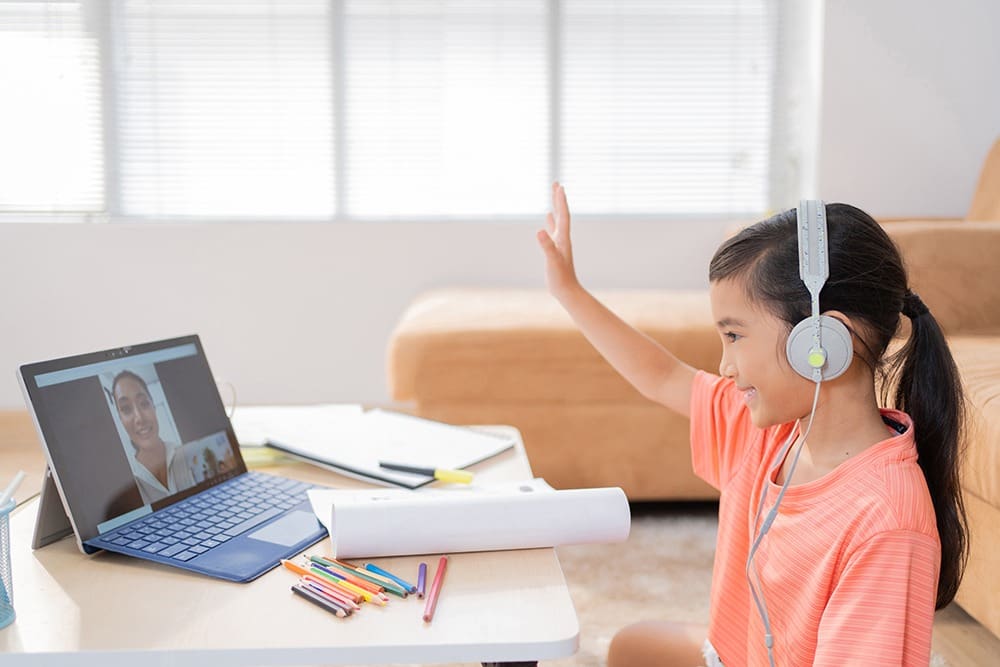By Dr. Kirti Munjal
Principal
Tulsi College of Education for Women
Ambala (Haryana)

“If we teach today’s students as we taught yesterday’s, we rob them of tomorrow”.-John Dewey
The teaching and learning environment is embracing a number of innovations in these unprecedented times of the global pandemic. The innovative pedagogical approach of blended learning is being embraced rapidly as the educational institutes do not want to rely on just online education without the human touch and the experiential element which is so very important for a wholesome educational experience. With the Covid- 19 situations not apparently getting diluted in the near future, the introduction of blended learning is slated to be the new normal.
Blended learning is a distinct kind of formal multichannel educational programme that is made up of traditional in-person classroom time as well as an online study using varied e-learning techniques. Classes in the blended learning model often take place in a real ‘brick and mortar’ classroom with a dedicated tutor but offer additional learning opportunities by way of a digital platform. Though most of the developed nations are progressing towards this great switch through various innovations its uptake, especially in the developing world faces challenges for it to be an effective innovation.
Finding the unique blend that would optimize learning in an ecosystem–
It is impossible to find a single method of blended learning because there can be as many ways to blend face-to-face classroom time and online lessons as there are students. The majority of educators have been using blended-learning programs that resemble one of four models in vogue like Rotation, Flex, A La Carte, and Enriched Virtual. The Rotation model includes four sub-models: Station Rotation, Lab Rotation, Flipped Classroom, and Individual Rotation. But we should understand that in the present scenario blended learning is required not only to reduce physical attendance and to create smaller groups that allow for appropriate social distancing; but it is also needed to go back to frontal lessons as the prevalent mode of teaching, with technology supporting the learning process more than ever. That is what makes blended learning a viable model for the future of education, the in-person and online components can be combined in any proportion, with neither being inferior or superior to the other when it comes to grading or evaluating and the teacher can be as innovative and creative as can be possible.
The quality of blended learning can be increased manifold by ensuring the following while planning in the initial phase-
- A good practice to begin can be knowing the learners and their technology competency which will help in gauging what support they will need and thus the instruction can be tailored accordingly.
- It is also imperative to keep the end in mind by developing learning outcomes first. This will help in streamlining the course content and prudently blending learning tasks, activities and assessments that align with the learning goals.
- Moreover, presenting clear and specific guidelines for participation in the class as well as about expectations and procedures avoids confusion and laxity.
- In addition, using rubrics to clearly communicate learning objectives and grading criteria of both online and offline tasks can go a long way in building the confidence of learners.
In fact, with a global health crisis going on, it is only natural to be focused on the present, but instead of just firefighting in the midst of this crisis, it is time to look to the future of education worldwide and this future can be a promising one with the adoption of blended learning provided all the stakeholders stick to a positive mindset. In the words of George Couros, educator and author of The Innovator’s Mindset- “Technology will never replace great teachers, but technology in the hands of great teachers is transformational.”
References –
- https://educationaltechnologyjournal.springeropen.com/articles/10.1186/s41239-017-0043-4
- https://acerforeducation.acer.com/education-trends/covid-19-will-blended-learning-become-the-future-of-education/
- https://books.google.com/books/about/The_Blended_Learning_Book.html?id=chhoH9BlORgC
- https://books.google.com/books/about/Blended_Learning_in_Grades_4_12.html?id=GmvIn8qBwssC
- https://blendedtoolkit.wisc.edu/what/quotes/


